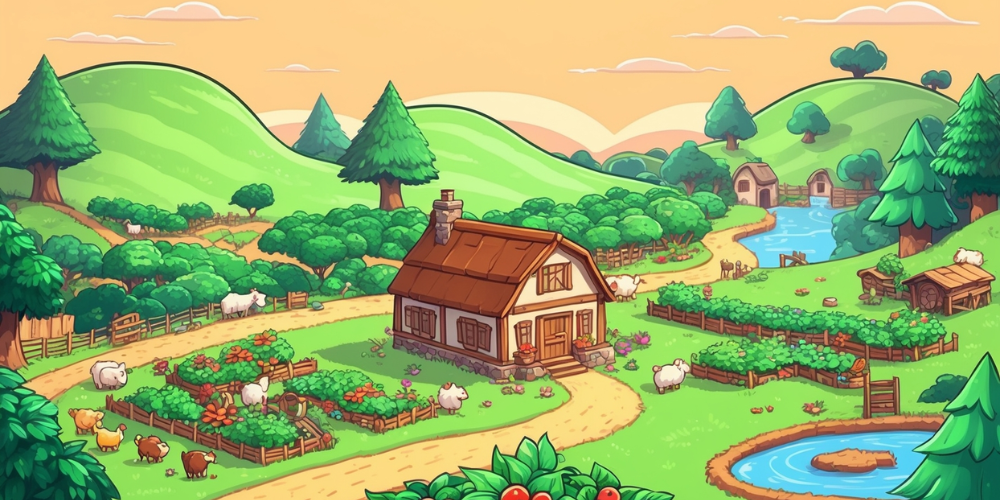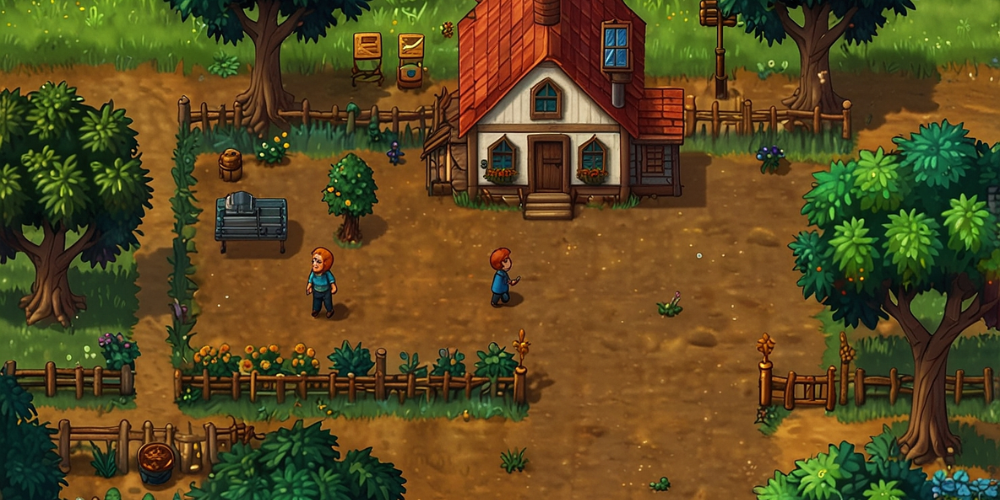
In the enchanting world of Stardew Valley, players are tasked with transforming their struggling farm into a thriving oasis. As you embark on this journey, you'll quickly discover that the tools at your disposal play a pivotal role in determining your success. Early on, these tools may feel inadequate, limiting your efficiency and energy levels. Fortunately, the game offers you a chance to upgrade these essential implements at the local Blacksmith, enhancing their functionality and sometimes reducing the energy required for their use. This guide delves into the intricacies of tool upgrades, providing you with everything you need to know to maximize your farming potential.
The Necessity of Upgrading Tools
As you start your adventure in Stardew Valley, you'll quickly encounter obstacles that your basic tools cannot overcome. Whether it's chopping down trees, breaking rocks, or watering your crops, the limitations of your initial tools can be frustrating. Upgrading them allows you to streamline your tasks and conserve energy, making your farming experience far more enjoyable. Not only does improving your tools aid in efficiency, but it also opens up new possibilities, such as accessing different areas and materials required for further farm enhancements.
Navigating the Blacksmith
Your journey to tool improvement begins at the Blacksmith, which operates daily from 9 a.m. to 4 p.m., except during festivals. To initiate an upgrade, you'll need to gather specific resources that correspond to the tool type, as well as some in-game currency for the upgrade fee. The Blacksmith requires five bars of the specific metal along with the monetary cost, so resource management is key.
Each upgrade takes two in-game days to complete, but you’ll only be without your tool for one whole day. This mechanic allows you to time your upgrades in a way that minimizes inconvenience. Simply drop off the tool whenever it suits you, and you can return for it in two days’ time. However, keep in mind that only one tool can be upgraded at a time, so you must prioritize which upgrade will be most beneficial for your farming tasks.

Best Times to Upgrade Your Tools
Efficiently planning your upgrades can save you valuable time and energy. For instance, when considering upgrading your watering can, paying attention to the weather is crucial. A smart strategy is to wait for rain the following day. By watering your crops just before you drop off your watering can, you ensure that your plants remain hydrated during the one-day upgrade period. Such tactics can significantly reduce downtime and maintain crop health.
Alternatively, if the month is ending and you’ve watered your crops, consider dropping off the watering can on the 27th. This prevents any wasted watering effort, especially if you have crops that won’t survive into the new month. Winter provides another golden opportunity for upgrades since only one crop can typically grow, lowering the immediate need for a watering can.
Understanding Tool Upgrades
As you venture deeper into your farming endeavors, it's important to understand the specific benefits each tool upgrade offers. Here's a brief overview:
Axes and Pickaxes
Upgrading these tools can drastically reduce the number of swings needed to fell trees or break rocks. For example, a Copper Axe can manage tasks like breaking wood stumps, while a Steel Axe can tackle wood logs. These enhancements not only save time but also free up energy for other tasks.
Watering Cans and Hoes
With upgraded watering cans, you increase your coverage area significantly. A Copper Watering Can allows you to water up to three plots of land at once, while a Steel Watering Can expands this range to five plots. Notably, even though you're watering multiple areas, it still consumes the same amount of energy as watering a single plot.

Golden Pan
This unique tool upgrade increases your yield when panning for ore. An upgraded pan not only nets you more resources but also enhances your chances of discovering special items alongside your ore, directly benefiting your crafting endeavors.
Trash Can Enhancements
The Trash Can may not immediately seem like a priority, but its upgrades pay dividends, especially during mining expeditions. Each upgrade allows you to recover a percentage of the sale price of items you decide to discard, up to a maximum of 60%. This can be incredibly helpful when space is tight, as it provides a means to generate income from items you can't carry back to the farm.
Summary of Upgrading Costs
Understanding the costs associated with upgrading each tool forms an essential part of your strategy in Stardew Valley. Here’s a brief overview of the tools available for upgrades and their respective costs:
- Copper Axe - Cost: 200g + 5 Copper Bars
- Steel Axe - Cost: 5 Iron Bars + 500g
- Gold Axe - Cost: 5 Gold Bars + 10,000g
- Iridium Axe - Cost: 5 Iridium Bars + 25,000g
- Copper Watering Can - Cost: 200g + 5 Copper Bars
- Steel Watering Can - Cost: 5 Iron Bars + 500g
- Trash Can - Starts at 100g + 5 Copper Bars
Conclusion: Mastering Your Farming Tools
Upgrading your tools in Stardew Valley is a vital component of enhancing your farming efficiency and overall gameplay experience. By utilizing the services of the Blacksmith effectively and understanding the implications of each upgrade, you can optimize your approach to farming. Remember to keep an eye on the weather and the calendar, as strategic planning can mitigate downtime. Ultimately, the joy of Stardew Valley lies in building a flourishing farm, and improved tools are your best allies in achieving that dream.
As you progress through the game, always be on the lookout for resources and plan your upgrade sequences carefully. Happy farming!